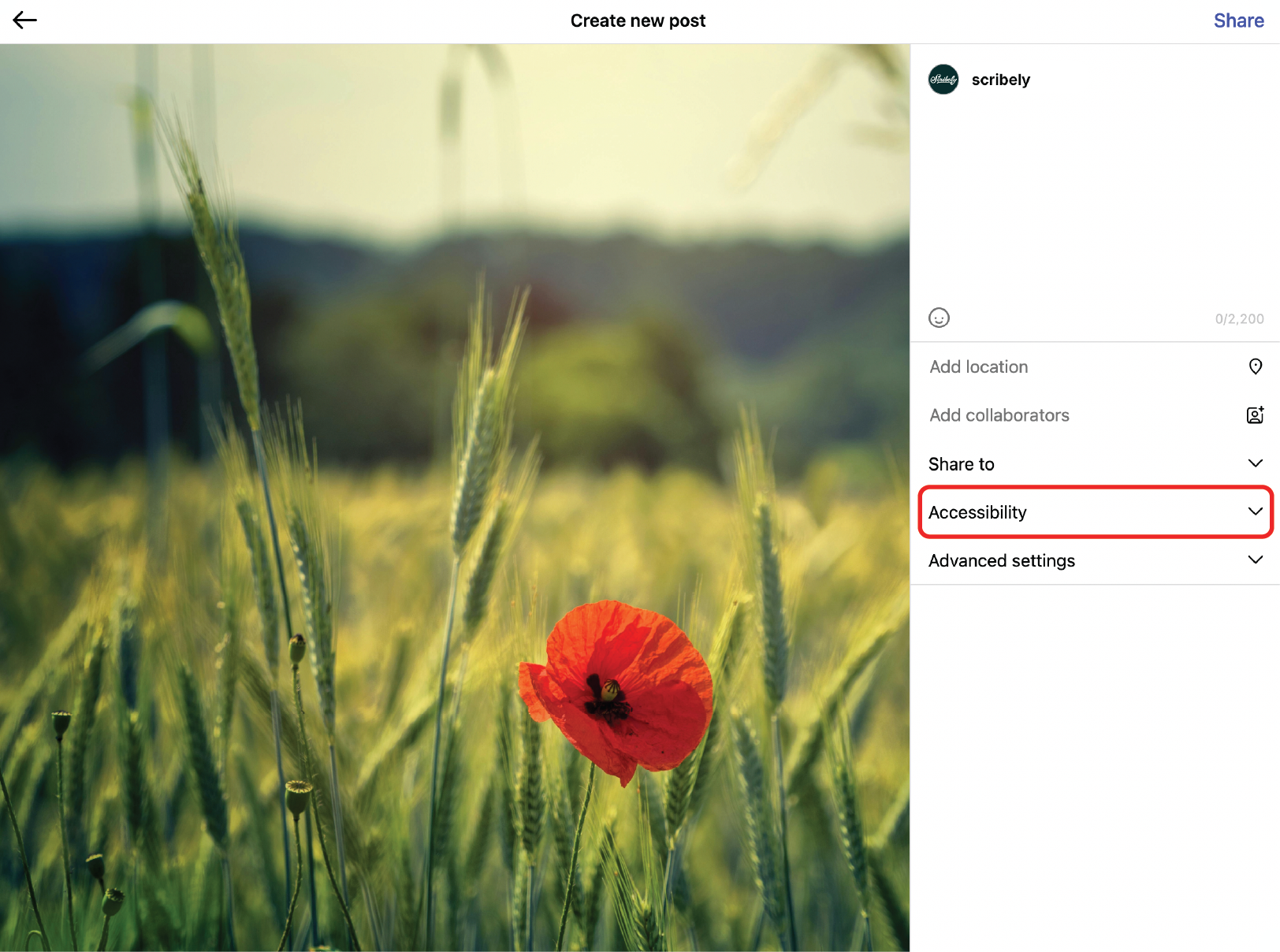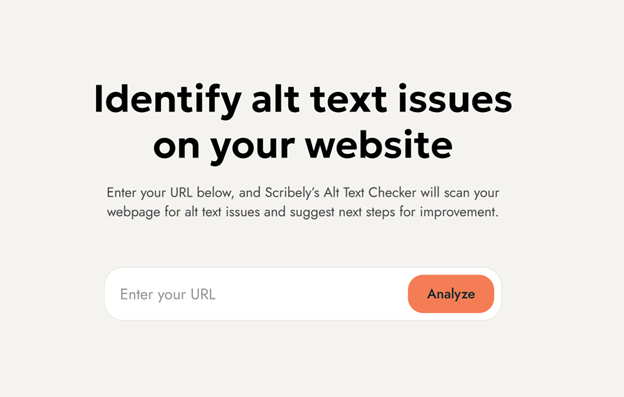Introduction
This blog post explains the shift from traditional SEO to Answer Engine Optimization (AEO), a new discipline focused on making content AI-readable for features like Google's AI Overviews. It details why rich, descriptive image data—including alt text, filenames, and structured data—is now a critical strategic asset for discoverability. The piece serves as a technical education for brands to ensure their visual content is structured to directly answer user questions in the new era of conversational search.
The performance of your enterprise's images hinges on a critical factor: the quality of your descriptive image data. Rich, descriptive image data has become a valuable reference for a new optimization discipline: Answer Engine Optimization (AEO).
Detailed image descriptions have evolved from a simple SEO best practice into a strategic asset. They are a fundamental form of data that helps make images AI-readable, directly enabling their use in the sophisticated, answer-first ecosystem of modern search.
Is AEO Just a New Name for SEO?
The most direct answer is: AEO is the necessary evolution of SEO. It is not a completely separate discipline, but rather the new set of priorities required to succeed in new formats of search, like AI overviews or conversational search.
Here’s a summary of that strategic shift:
- SEO Focus
- Primary Goal: Rank in the "10 blue links" to drive traffic volume.
- Unit of Optimization: Keywords (e.g., "best hiking boots").
- Content Strategy: Cover broad topics to capture a high volume of related keywords.
- Technical Focus: Primarily on site speed and crawlability.
- Image Optimization: alt text was for accessibility and basic keyword context.
- AEO Focus
- Primary Goal: Become a primary source for the AI Overview or conversational response; drive fewer but higher-quality, high-intent clicks.
- Unit of Optimization: User Intent & Entities (e.g., The product "hiking boot" with attributes: waterproof, durable, for wide feet, under $200).
- Content Strategy: Provide granular, specific, and demonstrably expert content (E-E-A-T) that directly answers complex questions.
- Technical Focus: All of the above, plus an emphasis on structured data (Schema.org) and rich metadata feeds from PIM/DAM systems, like alt text.
Practicing SEO in 2025 without implementing the principles of AEO means you are optimizing for search engines that are rapidly changing. AEO focuses on providing direct, concise answers to user queries, often in formats like featured snippets, AI Overviews, or voice assistant responses. Rich image data is a cornerstone of this new discipline.
- Providing Direct Visual Answers: When a user asks a question an answer engine's goal is to provide the best possible visual answer immediately. Part of the process is scanning ts index for images with highly descriptive, structured data matching the user's query entities. An image with rich metadata is seen as a more trustworthy and relevant candidate to be featured directly in the answer.
- Context for Multimodal AI: Multimodal search blends text, voice, and visual queries. A user might use Google Lens to search using a picture or ask a voice assistant to "Show me mid-century modern armchairs under $500." For an answer engine to fulfill this request, it must be able to connect the user's intent with images that have been precisely described with matching attributes. The descriptive data is the essential bridge between different modes of inquiry.
- Building the Knowledge Graph: Answer engines like Google and Bing build massive "knowledge graphs"—vast networks of interconnected facts about people, places, and things. When you provide detailed, structured data for your images, you are directly feeding and refining this knowledge graph. You are explicitly teaching the engine that this specific image is a visual representation of that specific entity (e.g., a product, a person, a location). This increases the engine's confidence in your content and makes it more likely to use your images to answer questions about those entities.
The Irrefutable Evidence of a Paradigm Shift
Now that we've defined the new strategic focus, here is the market evidence proving this shift:
Introducing AI Overviews: The New Search Engine Results Page (SERP)
- The Evidence: In May 2024, Google officially launched AI Overviews. This feature uses AI to provide a direct, synthesized answer at the very top of the page, pushing traditional search engine results further down.
- The Impact: Instead of providing a list of websites, Google's AI is becoming the destination itself, altering the goal of traditional SEO.
The Great Devaluation: Google's Updates Dismantled Old SEO
- The Evidence: The September 2023 Helpful Content Update (HCU) and the March 2024 Core Update were events that de-indexed sites Google's AI systems deemed "unhelpful" or "SEO-first," regardless of their previous rankings.
- The Impact: Google's systems now reward content demonstrating genuine E-E-A-T (Experience, Expertise, Authoritativeness, and Trustworthiness). Old tactics are no longer just less effective; they can actively harm your site's visibility.
The New Language of Search: From Keywords to Conversational Intent
- The Evidence: The conversational nature of AI encourages users to ask detailed or follow-up questions like, "Show me a mid-century modern armchair in a durable, kid-friendly fabric under $750."
- The Impact: A single article is no longer enough. To be included in the AI's answer, your product data must be granular enough to satisfy every component of that query. This is the foundation of AEO.
The AEO Technical Landscape
Optimizing effectively for AEO requires translating your brand's visual power into descriptive machine-readable data.
From DAM to DOM: A Technical Breakdown of AI Data Ingestion
A brand's power is often communicated through its visuals. To communicate these visuals to AI this visual power needs to be translated into a machine-readable format.
Step 1: The Source of Truth (PIM/DAM) - High-quality metadata originates from a central source, typically a Product Information Management (PIM) or Digital Asset Management (DAM) system. Here, an image asset is not just a file; it's an object with structured fields like: product_sku, image_file_name, image_alt_text, product_description, feature_list, etc. This is clean, structured data that answer engines will reference.
Step 2: Server-Side Rendering & Code Construction - When a user (or bot) requests a product page, a brand's server-side application (via the CMS) queries their PIM/DAM through an API to pull metadata and dynamically construct a HTML Document Object Model (DOM) that builds the semantic context for a brand's information.
Step 3: The AI Crawler's Parsing Process - When a bot crawls a page, it performs a multi-stage analysis:
- Raw HTML Parse: It immediately reads the alt text, the descriptive file name, and the surrounding text.
- Structured Data Extraction: It specifically identifies the schema.org markup. For example, using the schema it now knows this is not just an image; it is an imageobject that is the image property of a product with a specific SKU, name, and price. Schema is an explicit, high-trust signal that removes ambiguity.
- Entity Recognition: The AI's Natural Language Processing (NLP) models parse all this text to extract entities ("Armchair," "Walnut Wood," "Boucle") and their relationships, creating a knowledge graph for the page content.
Step 4: The Multi-Modal Synthesis - This is the most advanced and critical stage.
- Visual Analysis: The image file ( ...armchair.jrg ) is fed into a Computer Vision (CV) model. This model outputs its own set of labels with confidence scores (e.g., ["chair": 0.98, "armchair": 0.95, "green": 0.89, "wood": 0.92}).
- Cross-Modal Validation: A higher-level multi-modal model takes the text-based entities from your HTML (Step 3) and compares them against the pixel-based labels from the CV model (Step 4.1).
Deconstructing the AEO-Ready Image Description
What, precisely, are the textual image inputs that help AEO? Descriptive image data is a composite of several critical data layers, each serving a unique function in teaching the AI about your visual assets. Think of these elements not as separate tasks, but as reinforcing layers of evidence presented to the AI.
Alt Text: In traditional SEO, alt text was a minor ranking factor and an accessibility feature. In AEO, it is the primary textual confirmation of what the computer vision model "sees."
AEO-ready alt text provides specific entities ("walnut wood," "boucle fabric") and attributes ("mid-century modern," "durable") that the AI can assess against both its visual analysis and the user's conversational query. It directly answers the question, "What is this image, specifically?"
The Descriptive Filename: Before an AI even parses your HTML, it sees the filename. This is your first, and perhaps easiest, opportunity to provide context.
- Low-Confidence Example: IMG_8475.jpg or SKU11234.jpg
- High-Confidence Example: mid-century-modern-walnut-armchair-green-fabric.jpg
A descriptive filename acts as the initial anchor for the AI's understanding. It primes the system with relevant entities before any other analysis begins, creating a strong foundation for everything that follows.
Surrounding Context: An image does not exist in a vacuum. The AI heavily weighs the text immediately surrounding the image—the product description, the headings, and captions—to understand its purpose and relevance. This is where you demonstrate E-E-A-T.
- If the surrounding text discusses the armchair's durability and stain resistance, it validates the image as a solution for a family with kids.
- If the text mentions the designer and the history of the style, it validates the image as an authentic, high-value piece.
This narrative layer answers the question, "Why is this image important in this context?"
Structured Data (Schema.org): This is the most powerful layer and the cornerstone of AEO. Schema markup is not a hint; it is explicit, unambiguous documentation written in the AI's native language. By using Product, ImageObject, and other schema types, you are not asking the AI to guess, you are telling it:
- This is not just any image; this is the ImageObject for a Product.
- The product's SKU is "WZ-789".
- Its name is "The Walton Armchair".
- Its color is "Olive Green" and its material is "Walnut, Boucle".
- It has an aggregateRating of 4.8 stars from 257.
When a user asks, "Show me a highly-rated mid-century armchair in green," this structured data allows the AI to select your product with absolute certainty. It is the ultimate trust signal, removing all ambiguity and making your content a prime candidate for an AI Overview.
AEO delivers ROI when you meticulously layer these descriptive elements—from the alt text to the schema—you are not just optimizing a webpage. You are building a comprehensive, trustworthy data profile for every image you own. This high-confidence profile is what allows AI to feature your products as the definitive answer, driving fewer but far more qualified clicks from customers who are ready to convert.
Conclusion: The Power of Your Images is Built on Your Data
The era of passive descriptive metadata is over. The changes we see today are the established baseline for a new generation of digital interaction.
Executing this at scale is impossible without a robust technical foundation. It underscores the strategic imperative for a cohesive tech stack where your DAM/PIM can seamlessly feed this detailed, descriptive, structured data to your CMS and all other channels.
In the past, content was created for human consumption and optimized for machine discovery. Now, you must structure your data for machine cognition so that it can be creatively presented for human consumption. The companies who will excel at achieving this will be those who treat their visual data as a primary strategic asset, managed with precision through a cohesive PIM, DAM, and CMS ecosystem.
The future of a brand's discoverability will not be experienced by customers through gaming algorithms, but by using description to teach the AI what is being offered to customers.

Check out Scribely's 2024 eCommerce Report
Gain valuable insights into the state of accessibility for online shoppers and discover untapped potential for your business.
Read the ReportCite this Post
If you found this guide helpful, feel free to share it with your team or link back to this page to help others understand the importance of website accessibility.











.jpg)





.jpg)




























_edited_6x4-p-1080.jpeg)


